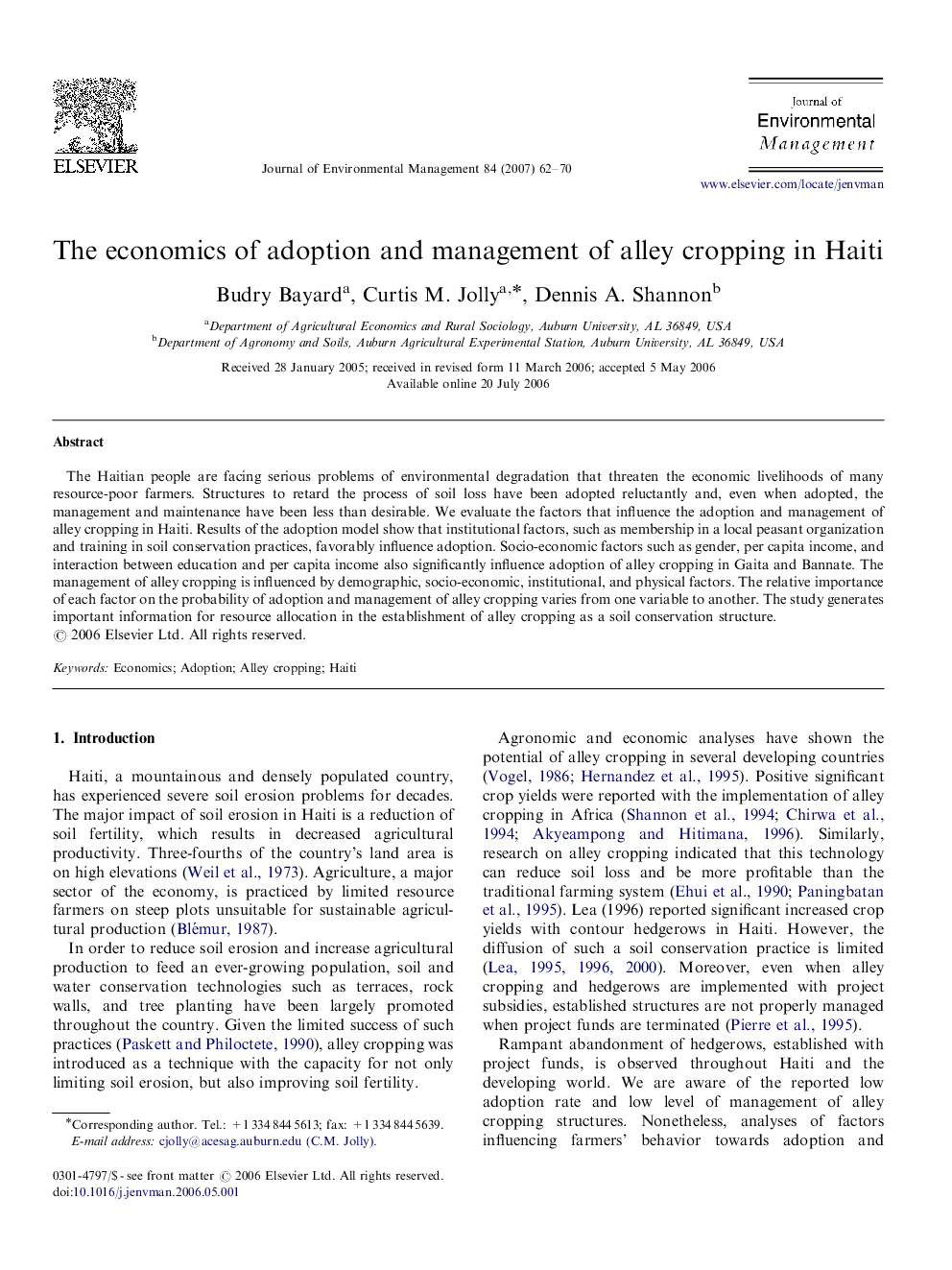| Article ID | Journal | Published Year | Pages | File Type |
|---|---|---|---|---|
| 1058754 | Journal of Environmental Management | 2007 | 9 Pages |
The Haitian people are facing serious problems of environmental degradation that threaten the economic livelihoods of many resource-poor farmers. Structures to retard the process of soil loss have been adopted reluctantly and, even when adopted, the management and maintenance have been less than desirable. We evaluate the factors that influence the adoption and management of alley cropping in Haiti. Results of the adoption model show that institutional factors, such as membership in a local peasant organization and training in soil conservation practices, favorably influence adoption. Socio-economic factors such as gender, per capita income, and interaction between education and per capita income also significantly influence adoption of alley cropping in Gaita and Bannate. The management of alley cropping is influenced by demographic, socio-economic, institutional, and physical factors. The relative importance of each factor on the probability of adoption and management of alley cropping varies from one variable to another. The study generates important information for resource allocation in the establishment of alley cropping as a soil conservation structure.
